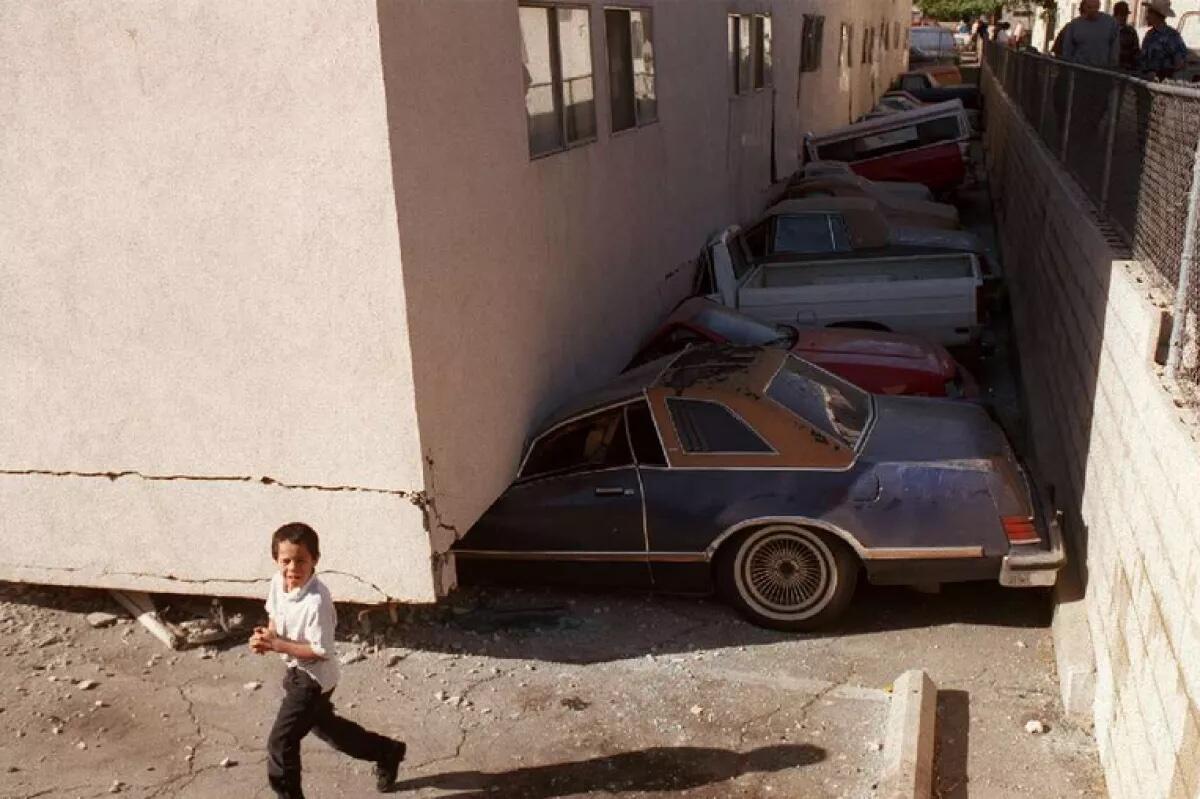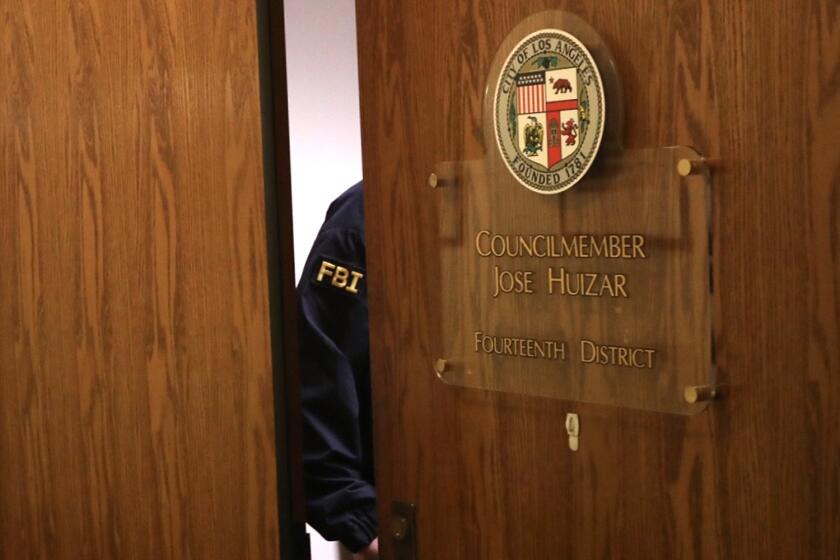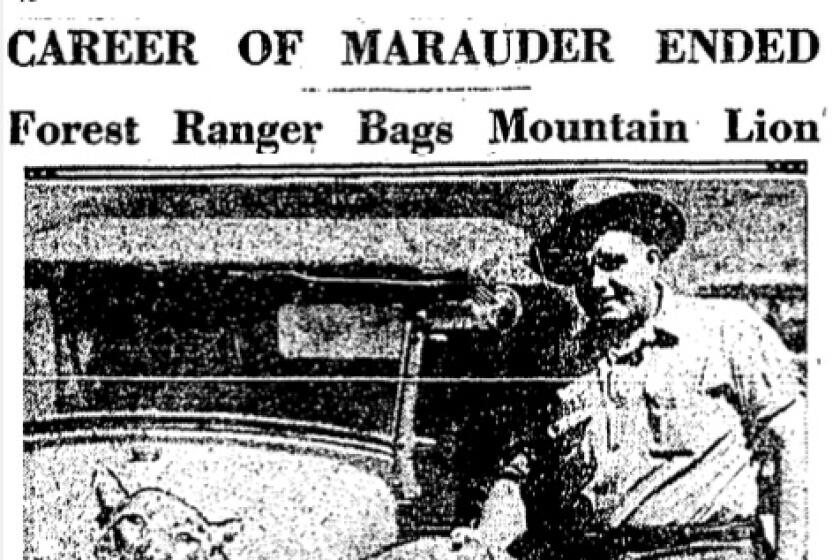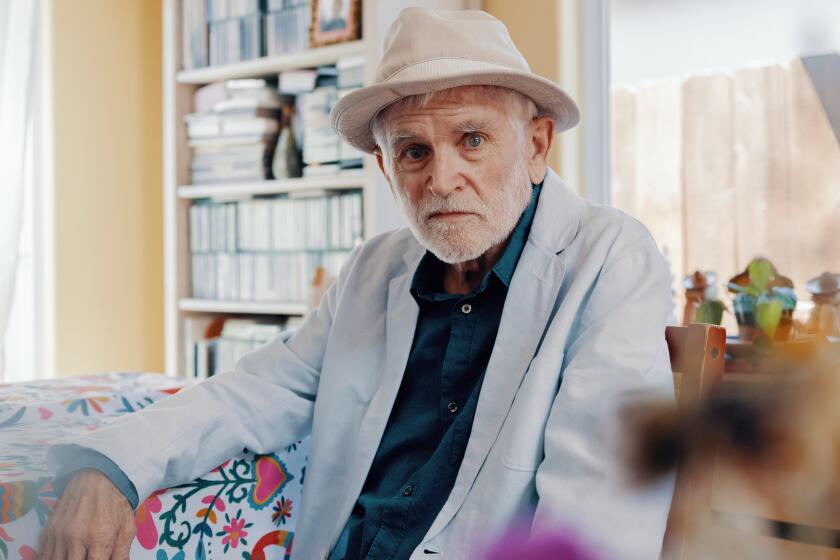Riots, earthquakes, now homelessness — why and how L.A. mayors declare emergencies

- Share via
The charter of the city of New York is not what you’d call festive-season reading, but with a new mayor taking the wheel in Los Angeles, naturally you wonder — well, I wonder — about the rules of the road for this city compared to that other big blue coastal city, the one that, btw, has still never had a woman mayor.
Scanning the enumerated powers of the mayor of New York is like reading a job description for Dumbledore, if Dumbledore had a hankering for civic governance and pinstriped suits.
That mayor is a magistrate. That mayor has the powers of a finance board, and can create or abolish entire bureaus and divisions, reorganize any agency and create new ones, coordinate criminal justice, health services, environmental and development operations, and appoints the head of the city’s schools — all “to achieve effective and efficient functioning and management of city government.”
Our mayor has virtually none of those powers — but in a declared emergency, there’s a little more muscle to flex in Room 303 at City Hall.
L.A.’s new mayor, Karen Bass, chose to start her first day on the job at the city’s emergency operations center, doing what she’d pledged to do: declaring a state of emergency to take on the homelessness crisis.
If this were New York, that might be it: “fiat mayor,” bada boom, bada bing. Here, the City Council has to give the mayor the green light for 30 days, and then re-up her emergency powers every 30 days thereafter to keep them going.
Get the latest from Patt Morrison
Los Angeles is a complex place. Luckily, there's someone who can provide context, history and culture.
You may occasionally receive promotional content from the Los Angeles Times.
So on paper, their mayor can beat our mayor in sheer authority, but neither are L.A.’s mayoral powers the 98-pound weakling they’re sometimes made out to be.
The emergency declaration gives the mayor the muscle to get money fast to those providing services to the homeless, to OK master-leasing of buildings, and speed along clanking, dragging regulations and permitting. She can also end-run usual processes to pay for all kinds of services without competitive bidding — and without the OK of the City Council.
Now, power being zero-sum, the council — its 15 members each mighty chieftains of a particular district — has to give up some authority for emergency declarations to work. The municipal math so far has been, divide citywide solutions to homelessness by 15, and there’s your formula for “fail.” Now, with these emergency powers, if the mayor’s plans work, each council member can take a bit of the glory.
All this has been made easier because of how the L.A. city charter has changed.
Los Angeles’ reputation for civic corruption pales in comparison with Chicago or San Francisco. But the City of Angels has a long history of sinners in public office.
The wise Raphael J. Sonenshein, executive director of the Pat Brown Institute for Public Affairs at Cal State L.A., was also executive director of the city’s appointed charter commission in the late 1990s.
Before those changes in what amounts to the city’s constitution, he told me, speedy action in emergencies could be a rather more cumbersome process.
Although the mayor was in charge of the city in its emergency state, that power wasn’t in the charter — insulated from the council — until voters put it there in 1999.
“Los Angeles seems to operate on the notion of having temporarily a very strong mayor when necessary. The difference from East Coast cities, where I grew up, is that [mayors] are never not in charge. ...
“Here, the mayor often may seem hamstrung in many different ways by all the [city’s] governing bodies, but when there’s something really huge, the system is there to allow more of a concentration of power for 30 days. It’s a very L.A. way of strengthening the mayor when you need to strengthen the mayor.
“This is a perfect moment to do it — a reset with new mayor on an intractable issue. I think it’s going to cause options to flow to the mayor’s office — but not forever.”
Sometimes, our crises have been enormous — so big that local emergency rule has been superseded by state and even federal disaster declarations, like the 1992 rioting after the Rodney King LAPD beating acquittals. Gov. Pete Wilson mobilized the California National Guard, and, reportedly at Mayor Tom Bradley’s request, President George H.W. Bush ordered federal officers sent into the city.
Earthquake preparedness is about communication, resilience and understanding and mitigating your risks. Our newsletter course will teach you how.
Two years later, as Sonenshein reminded me, the Northridge earthquake prompted Mayor Richard Riordan to issue an emergency declaration, which then had only the administrative code to back it up — not the specific power of a city charter.
I know, I know, “city charter.” Eyeroll. But hang in here.
If you lived in and voted in L.A. in 1999, you probably made this happen: You changed the city charter to create a specific mayoral emergency declaration authority, and now there’s a specific city department of emergency management.
Mayors haven’t exactly run amok with this new authority. It still takes monthly re-upping, for one thing, and for another, there’s a risk in pulling the emergency cord too much. As Sonenshein noted, “if everything is an emergency, nothing is.”
Floods, fires, yep, all disasters, of course, but there are disasters that you can’t see on the 10 o’clock news.
In 1994, for example, under the old charter, Riordan agreed with the City Council’s request to declare a state of emergency over AIDS. That let organizations handing out clean needles sidestep state law and LAPD enforcement to try to corral the epidemic among IV drug users. It would have been an easier task five years later, under the 1999 charter revisions, which Riordan endorsed.
Old Christmas postcards reflect Southern California’s long campaign to portray itself as a paradise — the opposite of cold, wintry parts of the U.S.
In 2020, Mayor Eric Garcetti invoked the emergency declaration for the COVID pandemic. With the City Council’s endorsement, that meant Garcetti could — and did — exercise out-of-the-ordinary power. “Safer at Home” closed the doors of nonessential businesses such as bars, restaurants, clubs, theaters and gyms, and it put a moratorium on evictions. The restrictions that remain from that March 2020 ukase will wind down in February, at Garcetti’s request and with the council’s vote.
For some delish history on all of this, Sonenshein put me in touch with Michael Holland, the city’s archivist, who dug into his documents treasure chest for nuggets like these:
In 1936, the city municipal code elaborated on a 1933 Major Disaster Emergency Council by specifying that it be made up of heads of various committees and subcommittees along with the mayor, of course, a Red Cross representative, and — believe what you read — a representative of the Los Angeles Chamber of Commerce. Obviously the last thing the city wanted was a catastrophe compounded by catastrophic PR.

In January 1951, in the thick of a Cold War with Russian commies, a hot war in Korea, and the hatching of McCarthyism at home, Los Angeles centralized its emergency power, by ordinance, under a Civil Defense and disaster board and corps.
The language was redolent of the military, and the threats it alluded to were Cold War kinds of fire and earthquake: “Disaster” included “enemy attack or threatened attack by land, sea, or air.”
And, for the duration, the mayor assumed a new title: commander.
“During the period of disaster, the Mayor shall be in supreme command of the Civil Defense and Disaster Corps. As such commander, he is authorized” to order unilaterally a whole host of items and actions.
The ordinance does not specify a mayoral command uniform, but you just know that someone somewhere in City Hall must have been itching to design one.
The state was essentially at war with cougars until the 1960s, when the bounties ended. As the big cats’ numbers declined, they came to enjoy more and more protections.
It’s a curious thing about Angelenos. The title “mayor” makes us think that the job has more authority than it in fact does, which may go a long way to explaining civic frustration when problems don’t get fixed.
Sonenshein offers the perfect example. For years, until homelessness became the top-of-mind problem in polls of L.A. voters, “the number-one issue in the mayor’s race is that the mayor should fix the schools.”
If you believe that can happen, I’ve got a Big Apple bridge to sell you.
Explaining L.A. With Patt Morrison
Los Angeles is a complex place. In this weekly feature, Patt Morrison is explaining how it works, its history and its culture.
More to Read
Get the latest from Patt Morrison
Los Angeles is a complex place. Luckily, there's someone who can provide context, history and culture.
You may occasionally receive promotional content from the Los Angeles Times.
















